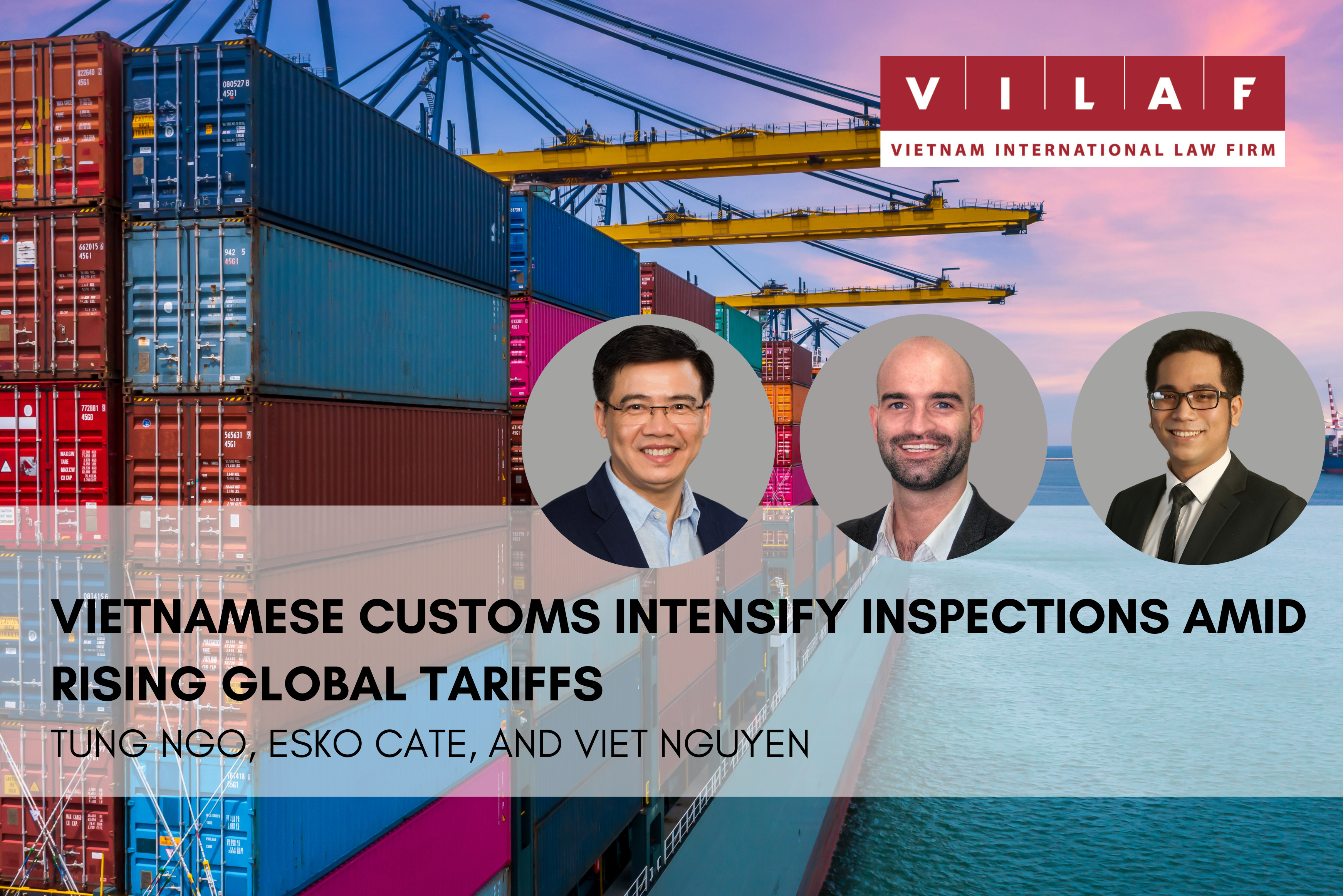
Written by Senior Partner Tung Ngo, Esko Cate, and Hoang Viet
As President Donald J. Trump implements additional tariffs — 25% on imports from Canada and Mexico (temporarily halted as of the publication date of this article) and 10% on imports from China — global trade is undergoing significant shifts. Given Trump’s campaign rhetoric and trade policies, further tariffs on other countries may soon follow.
In response, Vietnamese customs authorities may tighten inspections on manufacturing and exports, with a particular focus on the Vietnamese country of origin. If violations are suspected, customs officials have the authority to halt exports, leading to severe operational disruptions for manufacturers.
Why Manufacturers Must Prepare for Stricter Customs Inspections
To prevent costly delays, manufacturers should take proactive measures to ensure compliance with customs regulations. Vietnamese customs have broad authority over inspections and may collaborate with other specialized agencies. The most commonly inspected areas include:
1. Document Verification
Vietnamese customs officials rigorously check documentation for compliance, including:
- Contracts, commercial invoices, and packing lists
- Certificates of Origin (COO) and other technical documents of products
- Bill of lading or airway bill
- Import/export and other product-specific licenses where required
- Customs declarations
- Accounting, inventory, and tax documents
2. Physical Examination
Customs officers may conduct physical inspections of products and manufacturing facilities to verify that shipments match their customs documentation. Key areas of scrutiny include:
- Accurate country-of-origin labeling
- Proper application of preferential trade agreements
- Verification of product specifications and classifications
- Verification of inventory and bill of materials
- Determination of simple processing and manufacturing
- Ensuring all necessary import/export permits are in place
- Any other inconsistencies between customs documents
3. Customs Duty & Tax Assessment
Customs authorities assess whether proper duties and taxes have been applied, including:
- Verification of declared customs values
- Examination of tariff classifications and duty rates
- Review of VAT and special consumption tax compliance
4. Compliance with Regulatory Requirements
Manufacturers must comply with Vietnam’s regulatory framework, which may require oversight from specialized agencies, such as:
- Specialized compliance for regulated materials and products
- Product safety and technical standards verification
- Adherence to sanitary and phytosanitary measures for agricultural exports
- Sector-specific licensing and registration requirements
How VILAF Can Help You Stay Compliant
Preparing in advance significantly reduces the risk of customs-related delays and operational disruptions. VILAF has extensive experience assisting clients with customs compliance and has supported numerous businesses during audit processes. Our pre-inspection, developed from years of experience, helps businesses identify and mitigate potential risks before they escalate.
For expert guidance on customs inspections and compliance strategies, please contact Ngo Thanh Tung / Esko Cate and Nguyen Huu Hoang Viet.
